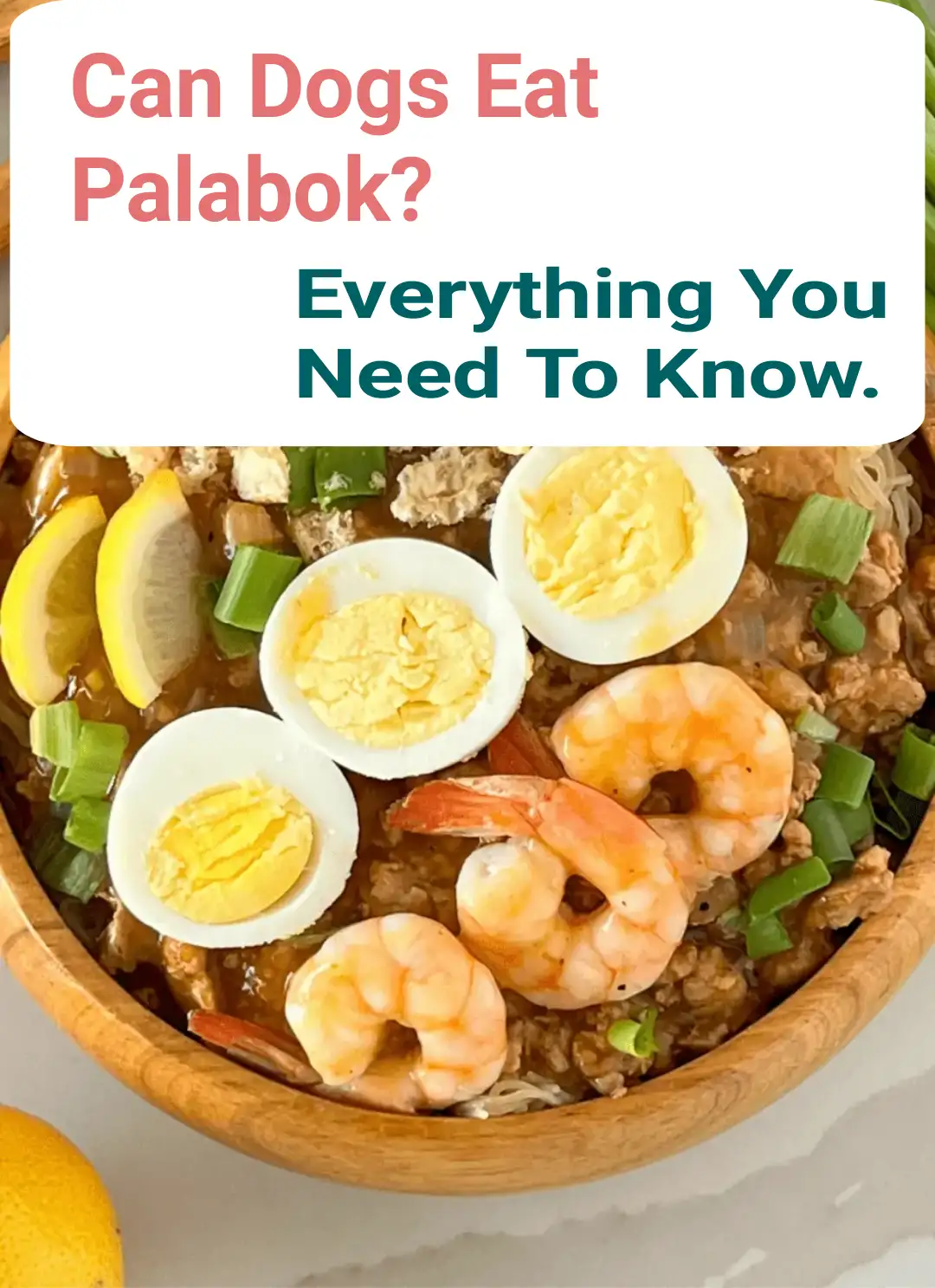Can Dogs Eat Palabok?

Palabok like every other popular pancit variety, is a hit at Filipino parties or festivities. This dish is also eaten as a daily food, and it is one you will never get tired of having. But while it is safe for humans, can dogs have palabok? Here is everything you need to know about Palabokfor dogs, and a dog-specific recipe.
What is Palabok?
Pancit palabok is a Filipino dish made with thin rice noodles placed in a shrimp-infused creamy sauce and various toppings like pork cracklings, hard-boiled eggs, porkfish flakes, shrimp, and scallions.
Although not as famous as bihon and canton, the palabok is equally a well-known variety of pancit, and it is considered to be more of a Filipino innovation, unlike the rest, which is Chinese-inspired.
Can Dogs Eat Palabok?
Dogs can have a little palabok, but it is not recommended. While palabok is made with annatto seeds, ground pork, eggs, scallions, rice noodles, pork broth, and shrimp stock, which could all be beneficial to dogs, it is also made with onions, which can cause anemia in dogs if a significant amount (medium to large bulb) is consumed.
Rice noodles or vermicelli noodles, like every other noodle, are safe for dogs to consume occasionally or as part of a well-balanced diet. But it is not suitable as a constant treat or meal since it only offers carbs and insignificant minerals.
Ground pork and eggs are great protein options for dogs. However, you need to be mindful, as pork contains mainly fats, and too much fat could cause pancreatitis in dogs. As an occasional treat, the ground pork can do, but as a staple, no. For the eggs in palabok, dogs could have them, but not too much, as they supply the body with cholesterol.
Pork broth is safe for dogs, and they could have some as part of a balanced diet. However, it contains more fat when compared to other broths, like chicken broth. Annatto is a natural dye and is safe for humans, but in dogs, it could cause food intolerance and hypoglycemia, according to studies. But your dog may need to consume lots of it to experience the symptoms.
Is Palabok Good for Dogs?
Traditional Palabok is not good for dogs, as it contains lots of ingredients that may be safe for humans to consume but not for a dog to have. Dogs could have a few spoons without issues, but it is best to either serve a dog-safe version or not offer your dog any at all, as upset stomachs and other possible risks are imperative.
Can puppies have Palabok?
Puppies have a more delicate and sensitive system when compared to adult dogs, and what may not irritate an adult dog will certainly affect a pup due to its size, and they are still developing.
Puppies can have certain vegetables, fruits, and human foods, but palabok is not one of those. It is best to feed your pup specific, quality foods that will aid proper development.
My dog ate Palabok. Any need to worry?
If your dog has some palabok, there is nothing to be scared of, as in most cases nothing will happen as the amount of onions needed to cause toxicity in dogs may not be present in a single dish of palabok. The common thing that may occur is an upset stomach as a result of the spices and mixtures going on in a bowl of palabok.
My little son has fed our dog some palabok from his bowl in the past (when I wasn’t looking), and all we had to deal with was a dog with a runny stomach. I fasted the dog for a few hours, offering only water before I followed with bland foods like chicken and plain cooked rice, and the problem was resolved the next morning.
Dog-safe Palabok recipe
Here is a dog-friendly palabok recipe that my pooch loves so much, and I am confident your dog will love it too:
Ingredients:
- 1 cup cooked and shredded chicken (make sure it’s boneless and skinless)
- 1 cup cooked rice noodles (make sure they’re plain and without any seasoning)
- 1/2 cup cooked and mashed sweet potato
- 1/4 cup cooked green peas
- 1 boiled egg, chopped (make sure it’s fully cooked and cooled)
- 1 tablespoon cooked and finely chopped carrots
- 1 tablespoon cooked and finely chopped green beans
- 1 tablespoon cooked and finely chopped spinach
- 1 tablespoon cooked and finely chopped zucchini
- 1 tablespoon cooked and finely chopped pumpkin
- 1 tablespoon cooked and finely chopped broccoli
- 1 tablespoon cooked and finely chopped cauliflower
For the sauce:
- 1/2 cup low-sodium chicken broth
- 1 tablespoon cornstarch
- 1 tablespoon unsalted peanut butter (make sure it doesn’t contain xylitol, which is toxic to dogs)
- 1/2 teaspoon turmeric (optional, for color)
Instructions:
- Cook the chicken thoroughly, then shred it into small, bite-sized pieces.
- Cook the rice noodles according to the package instructions, then drain and set aside.
- Cook the sweet potato until soft, then mash it.
- Boil the egg until hard-boiled, then chop it into small pieces.
- Cook the green peas until tender, then set aside.
- Cook each of the vegetables separately until they are tender, then finely chop them.
- In a small saucepan, mix the chicken broth and cornstarch until the cornstarch is dissolved. Cook over medium heat until the mixture thickens.
- Stir in the peanut butter and turmeric (if using) into the sauce until well combined. Remove it from the heat and let it cool.
- Assemble the Palabok by placing the cooked rice noodles in a bowl, then topping with the shredded chicken, mashed sweet potato, chopped egg, cooked vegetables, and green peas.
- Drizzle the peanut sauce over the top of the palabok.
- Serve it to your dog in appropriate portions, making sure it’s cooled down to room temperature.
Final thoughts
Palabok can be a great occasional treat for dogs if you make a dog-friendly version. The traditional Palabok recipe is not suitable for dogs, as it contains ingredients that may upset your dog’s stomach or possibly cause anemia.



